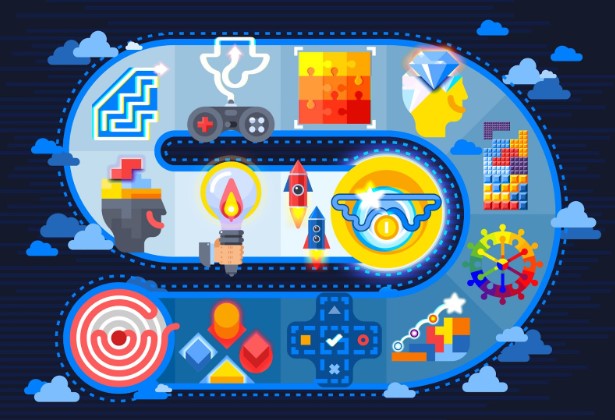Why Is Gamification Capturing The Attention Of So Many Sectors?
Published on: April 4, 2024
Reading time:
3 minutes

AI generated image
Gamification is a trend because it adapts to the new demands of today's society, which seeks more personalized, interactive, and meaningful experiences. It also benefits from the advancement of digital technologies and devices, which allow for the creation of increasingly realistic virtual environments in unprecedented and illusory settings.
According to a report by the research company MarketsandMarkets, the global gamification market is expected to grow from $9.1 billion in 2020 to $30.7 billion in 2025, with a compound annual growth rate of 27.4%.
The main factors driving this growth are:
- The need to improve customer and employee engagement and retention;
- The increasing demand for game-based learning solutions;
- The greater adoption of emerging technologies such as augmented reality, virtual reality, and artificial intelligence;
- The growing awareness of the benefits of gamification in various sectors such as education, healthcare, retail, finance, and others.
What advantages can gamification bring?
Gamification brings several advantages to the different contexts in which it is applied. Some of these are:
- Increases participant engagement and motivation by creating a sense of purpose, fun, and challenge;
- Improves learning and content retention by stimulating reasoning, creativity, and experimentation;
- Promotes the development of socio-emotional skills such as collaboration, communication, leadership, and resilience;
- Enhances the performance and productivity of participants by providing constant feedback and tangible rewards;
- Improves customer and employee loyalty and satisfaction by creating an emotional connection and identification with the brand or company.
Implementing gamification
Implementing gamification requires careful planning, taking into account objectives, target audience, context, and available resources. Some steps that can help in this process are:
- Define the objective: what is the expected outcome with gamification? What do you want to achieve or improve?
- Know the target audience: who are the participants in gamification? What are their characteristics, preferences, needs, and expectations?
- Choose the elements of gamification: what are the most suitable elements for the objective and the target audience? How will they be combined and integrated?
- Develop the solution: what will be the platform or system that will support gamification? What are the technologies involved?
- Test and evaluate: how will the pilot test of the solution be carried out? What are the success indicators? How will monitoring and analysis of the results be done?
Gamification can be a powerful tool for transforming people's experiences in various sectors, and we, at Gedui, have a solution for gamification in your company.
Have you ever participated in a gamification project? Has your company considered using this tool for employees?
#Gamification #EducationalGames #FunLearning #Engagement #Challenges #CorporateGames #interactive learning #EducationalInnovation #UserExperience #Motivation #InteractiveEducation
Photo by jesse-orrico-rmWtVQN5RzU-unsplash
Share post:
Return to blog


